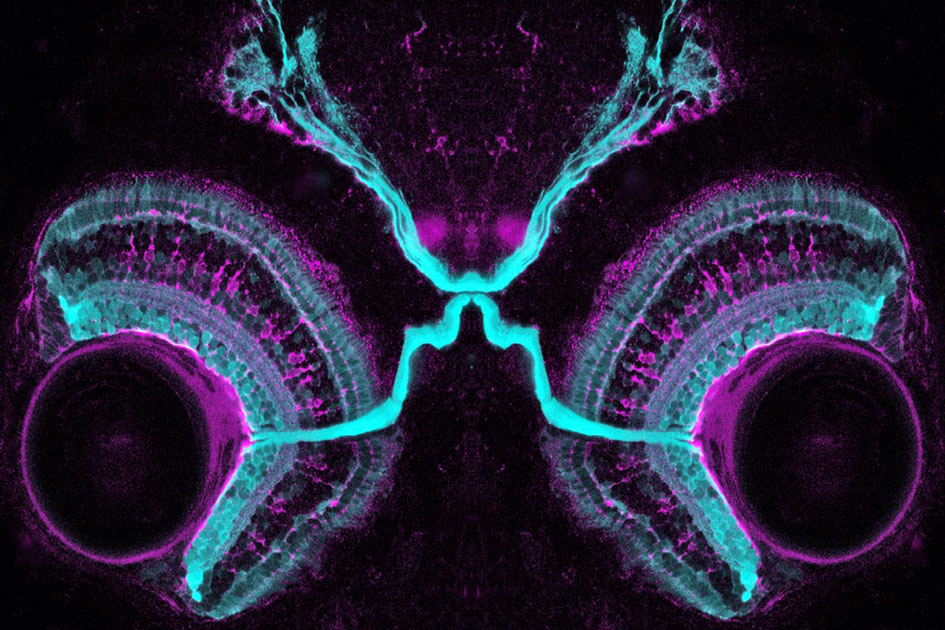Reed Biologist Lands $429,000 NIH Grant to Study Zebrafish Eye
The National Institute of Health awarded $429,000 to Assistant Professor of Biology Kara L. Cerveny [2012-] to advance her research on cell behavior inside the eye of the zebrafish. Prof. Cerveny’s research will focus on understanding the specific mechanisms employed within the retina that govern growth, tissue size, and composition.
“I’m fascinated by the development of the nervous system,” said Professor Cerveny. “One of the things I hope to discover is how at precise times and in specific locations, seemingly identical embryonic cells are encouraged to generate all the different types of neurons required for us to perceive our surroundings.”
Cerveny aims to uncover how specific signals, naturally occurring within and around the developing eye, impact proliferation and differentiation of embryonic cells. By studying these events in the zebrafish eye, she hopes to provide insight into exactly how the human eye regulates analogous cells.
When talking about the importance of funding basic biology, Cerveny mentioned its influence on students who go on to earn post-graduate degrees, and she shared hopes that her findings could advance glaucoma research. She also talked passionately about the importance of the universal skills that scholarly research imparts. “Students go on to do very different things and it informs them all,” she said. “I had a student who went into international relations, and he used the skills and information learned in my lab to influence policy.”
Cerveny earned her Ph.D. in biochemistry, cellular, and molecular biology from Johns Hopkins School of Medicine. She expanded her research interests with a Damon Runyon Post-Doctoral Fellowship at University College London. Her images of zebrafish eyes have been featured in the 2011 Wellcome Collection Image Awards, the MIT Koch Image Gallery, and on the cover of the 7th edition of Molecular Cell Biology. Before joining the Reed biology faculty in 2012, Cerveny was a full-time scientific editor of Cell.
Research reported in this publication was supported by the National Eye Institute of the National Institutes of Health under Award Number R15EY023745. The content is solely the responsibility of the authors and does not necessarily represent the official views of the National Institutes of Health.
Tags: Awards & Achievements, Professors, Academics, Editor's Picks, Research
